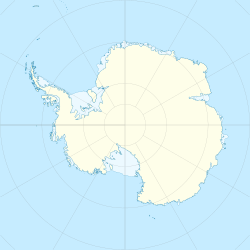Joubin Islands facts for kids
|
Location in Antarctica
|
|
| Geography | |
|---|---|
| Location | Antarctica |
| Coordinates | 64°47′S 64°27′W / 64.783°S 64.450°W |
| Archipelago | Palmer Archipelago |
| Administration | |
| Administered under the Antarctic Treaty System | |
| Demographics | |
| Population | Uninhabited |
The Joubin Islands are a small group of islands. They are located near Anvers Island in Antarctica. Specifically, they are about 3 kilometers (2 miles) southwest of Cape Monaco. These islands are part of the Palmer Archipelago.
A French expedition discovered the islands. This was the French Antarctic Expedition, 1903–05. It was led by Jean-Baptiste Charcot. He named them after Louis Joubin. Louis Joubin was a French naturalist.
The islands are a special protected area. They are part of a "Restricted Zone." This zone is called ASMA 7. It covers Southwest Anvers Island and the Palmer Basin. This means the area, including 50 meters (55 yards) from the shore, is managed carefully.
The Environment of Joubin Islands
The Joubin Islands have a similar geological makeup to Anvers Island. They were formed from volcanic rock and granite. The plants growing here are typical for the region. You can find different kinds of mosses, lichens, and algae. There are also two types of flowering plants. These are Antarctic Hairgrass and Antarctic Pearlwort.
Why Joubin Islands are Important for Birds
The Joubin Islands are very important for birds. BirdLife International has named them an Important Bird Area (IBA). This is because many birds come here to breed. About 250 pairs of imperial shags have their nests on these islands.
Other birds also nest here. These include Adélie, gentoo, and chinstrap penguins. You might also see southern giant petrels. These islands are a safe home for these amazing Antarctic birds.


